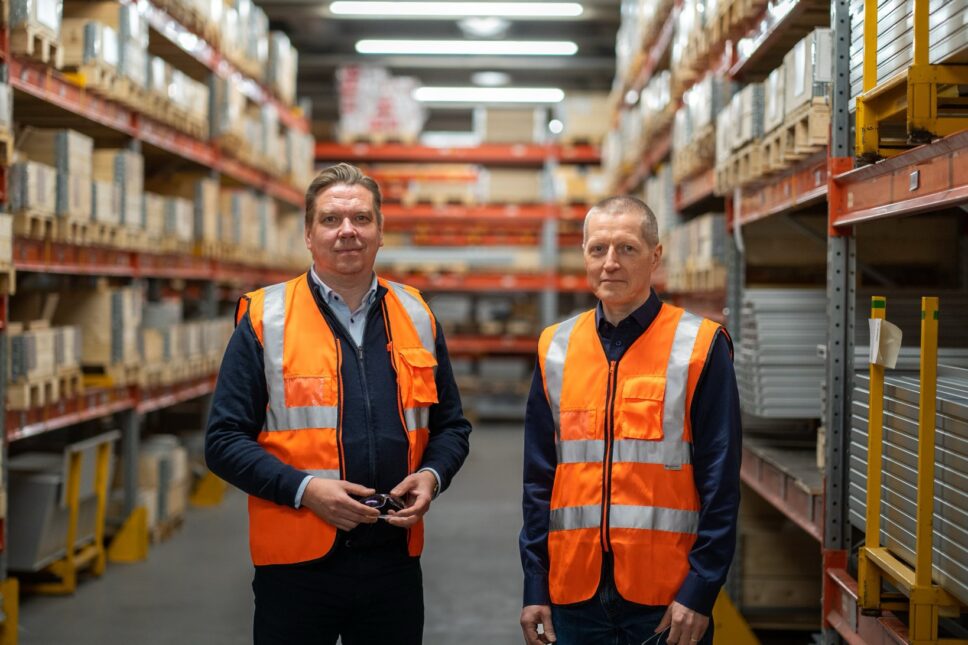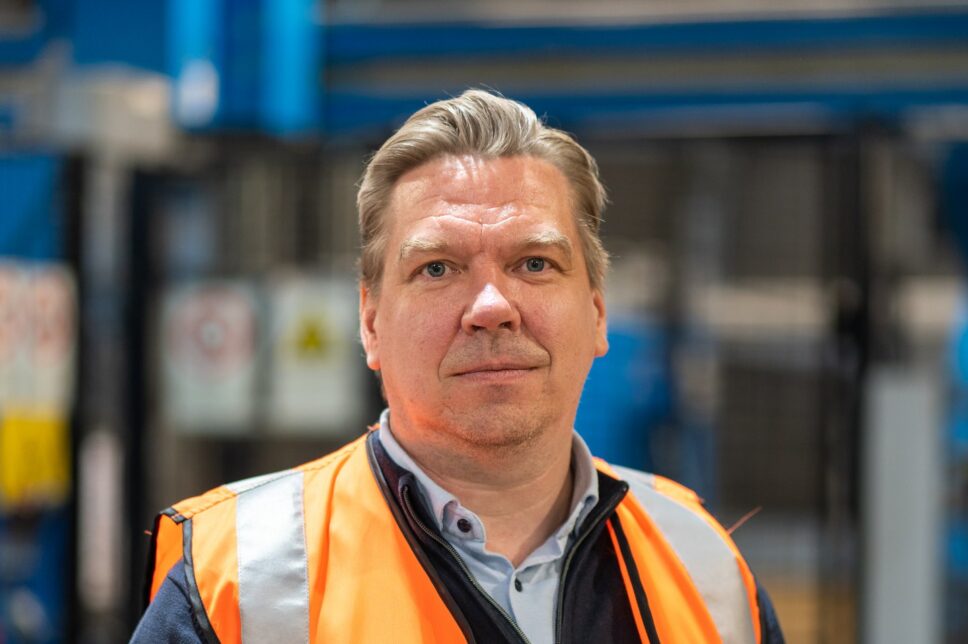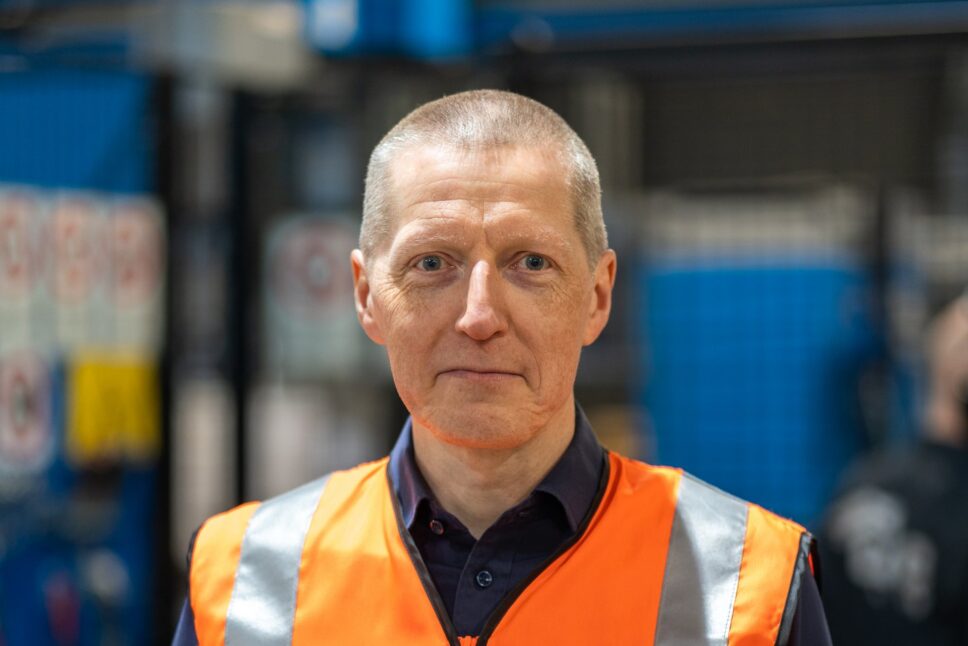Finelcomp, based in Outokumpu, invests EUR 2.5 million in reducing emissions and expanding production

Finelcomp, based in Outokumpu, is seeking growth in its international business and will carry out a EUR 2.5 million investment project by summer 2024. “Expanding our capacity and continuously improving our operations while considering corporate responsibility are important to us.”
Finelcomp, known as a manufacturer of switchboard mechanics, aims to become the market leader in the Nordic countries by 2026. This goal is specified in the new strategy prepared by the company based in Outokumpu.
“The reason is clear: the Nordic region is spearheading the clean transition, accelerating investments in electricity infrastructure and the industry that uses it,” says Sami Heikkinen, Finelcomp´s CEO.
A further target is to study the Central European market, where some pilot customer relationships exist.
“Our customer base is increasingly aware of environmental impacts. Environmental and responsibility themes impact us in three ways: we are developing our operations to improve our customer relationships, our work as an employer and our employer image, and our stakeholder cooperation,” Heikkinen says.
- Finelcomp, based in Outokumpu, North Karelia, has a modern sheet metal production plant that is large by Finnish standards.
- Finelcomp partners with switchboard manufacturers and develops, manufactures and sells indoor and outdoor enclosure and mounting solutions for power distribution and telecommunications devices. The solutions range in size from household switchboards to heavy-duty industrial switchgear.
- The company has customers in Finland, the other Nordic countries, the Baltic countries, Germany and the UK.
- It was established in 1988. Since October 2022, Finelcomp has been owned by the Swedish industrial conglomerate Kamic Group but continues to operate as an independent company.
- The company employs more than 100 people.
- Finelcomp´s turnover was EUR 22 million in 2022.
Finelcomp is a pioneer in its field, but Heikkinen says the company also aims to be a “good corporate citizen and an attractive workplace in Eastern Finland”.
Less wasted paint and lower energy consumption
The company’s EUR 2.5 million investment programme is an effort to develop the Outokumpu plant and reduce emissions.
“Painting sheet metal components is our most environmentally burdensome process in terms of the carbon footprint. We are making improvements to both our painting lines to reduce energy consumption and material waste. However, the gas used in painting remains an unresolved issue,” says Heikkinen.

The investment programme will also expand the production capacity: lead times will improve, which will enhance the property’s energy efficiency in relation to turnover. The last remaining hydraulic sheet metal working line in our facility will be replaced by a modern servo-powered production unit, allowing the line to produce twice as many products with lower energy consumption than before.
“Individual investments in machinery yield significant improvements to the overall electricity consumption. The laser cutting machine commissioned a few years ago is a good example of this,” Heikkinen says.
Finelcomp optimises its customers’ carbon footprints with flat pack deliveries: switchboard structures are delivered “à la Ikea” to minimise the need for space in logistics and storage.
“The materials used in production are also an important factor. Major players in the car and household appliance industries are pushing green steel, which will benefit the entire sheet metal industry,” Heikkinen commends.
Plant heating methods and sources are also important. Finelcomp is involved in an energy efficiency study coordinated by Business Joensuu to examine how waste heat could be recovered and fed into the district heating network. The project will involve ten of the most significant industrial and city properties in Outokumpu and the Outokumpu industrial village.
Major investment in ESG
Finelcomp is committed to ethical business practices and social responsibility with all its stakeholders. The firm began investing in environmental, social and governance (ESG) matters last year. The company’s ESG matters are in the hands of Heikki Kauppinen, the Technical Manager responsible for the company’s quality and process development.
“This topic requires a contact person within the management team – someone who can drive selected projects forward,” emphasises Heikkinen, the CEO.

He says the company is in a good position to handle its ESG responsibilities.
“The clean transition means, above all, the electrification of society and transport. More and more clean electricity is becoming available thanks to investments in solar and wind power. This will fuel industrial investments, for which Finelcomp offers modern solutions. At Finelcomp, we like to say we are on the side of the good and the clean,” Heikki Kauppinen says.
“Ethics and social responsibility are integral to Finnish business. Working around electricity will open up new and interesting opportunities,” Sami Heikkinen says.
Calculations made during a final project at t University of Applied Sciences
Heikkinen and Kauppinen point out that carbon calculation and reporting are still in their infancy.
“We are making plans for Scope 1 and 2 emissions. Scope 1 refers to the emissions from the company’s own operations – the greenhouse gas emissions of its factory. Scope 2 refers to the emissions from purchased energy and district heating, among other things. Our long-term plans provide for calculating the Scope 3 emissions of all our products, analysing each product throughout its life cycle,” Kauppinen says.
Finelcomp has been pleased with the help it has received from an external consultant and its cooperation with the Karelia University of Applied Sciences. In 2022, ethical ground rules were drawn up for the company and its supplier network and carbon footprint calculation began. Finelcomp commissioned the calculation of the company’s carbon footprint as part of a final engineering thesis at the University of Applied Sciences.
“Our main customer encouraged us to calculate our carbon footprint. We did some research ourselves and realised we needed help. Several similar projects were underway at Karelia University of Applied Sciences,” Heikki Kauppinen says.
The report confirmed the company’s preconception of the energy intensity of steel materials and painting and the harm that paint causes as a material. Kauppinen was surprised by the clearly polarised result.
“We have several work phases and materials, but these were clearly the three largest contributors to our carbon footprint.”
We are now in the analysis phase and will set targets after the summer. The results of the calculation will be used to develop an action plan. Finelcomp will also make use of a calculation report that Technology Industries of Finland will offer its members upon its completion after the summer.
Finelcomp’s 4 tips for getting started with carbon footprint calculations
- Decide, delegate and reserve time. Make the decision to begin calculating your carbon footprint and delegate it to the right part of the organisation. One tip for the person in charge: take time to think things through. Reserve plenty of time for the work – at least half a day at a time without any interruptions.
- Get your data in order! Keep your company’s data in good condition so that the source data you need for calculation is more readily available: quantities, money, usage and consumption. Income statements and suppliers can help you interpret data.
- Find out whether you can work with an educational institution. Educational institutions have a lot of knowledge and can provide tangible help and ready-made carbon footprint calculation software, so even small companies can get started.
- Keep a cool head with regard to certificates. Make sure your certificates conform to the standards and are not just a commercial sales gimmick.
Heikki Kauppinen, Finelcomp’s ESG manager
Take a calm and fact-based approach to certificate marketing
According to Kauppinen, the calculations will be used in sustainability reports or marketing. The company is currently in the mapping stage. In the future, the company wants to have a metric for calculating and continuously monitoring its carbon footprint that can be used for annual reporting.
“Calculating the carbon footprint of products and their life cycles are good starting points for development work. The starting point should always be good calculations. They are followed by analysis and a decision on which category can be quickly influenced and which things need a roadmap for several years.”
Kauppinen calls for patience and fact-checking with regard to sustainability certificates.
“There is a jungle of commercial certificates and abbreviations out there. I recommend screening the marketing material to find the facts about which calculation software and standards are used.”
“We are pleased with how far we have come in promoting ESG issues so far. We already have enough data and results to plan a more detailed roadmap in autumn 2023. It will go live in 2024,” says CEO Heikkinen.
Text: Marjo Vuorinen
Photos: Mitja Piipponen
